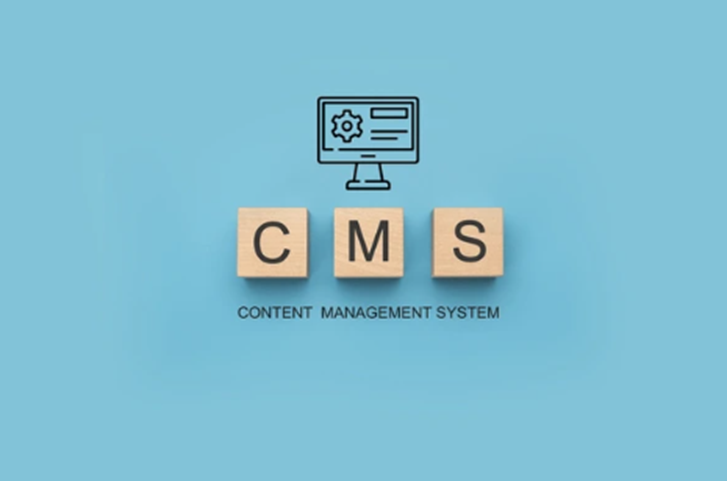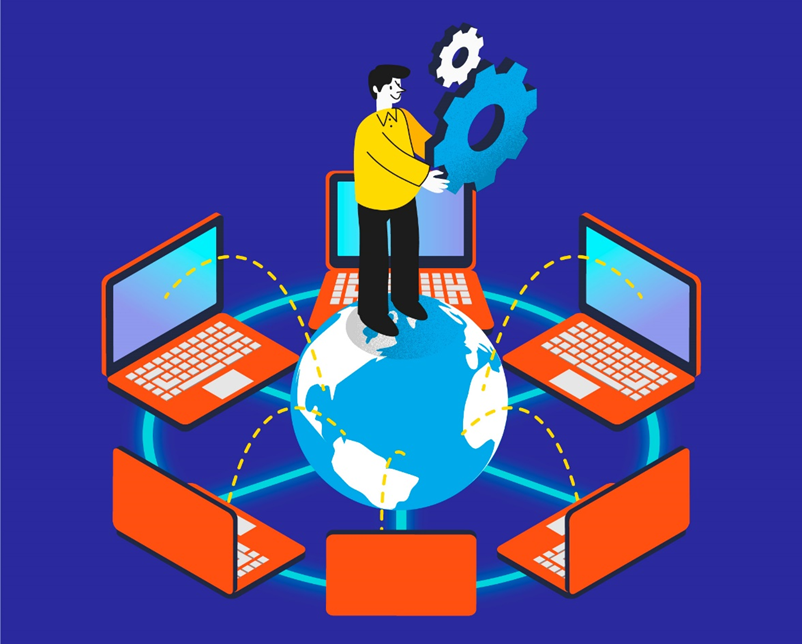5 CMS Mistakes That Could Be Hurting Your Website’s Performance

Strong 8k brings an ultra-HD IPTV experience to your living room and your pocket.
A content management system (CMS) is a software application that allows users to create, manage, and modify digital content on a website without requiring extensive technical knowledge. Popular CMS platforms include WordPress, Joomla, and Drupal. While these platforms make website management easier, improper use can lead to performance issues that hinder user experience, search engine rankings, and overall website functionality.
Website performance refers to how quickly and efficiently a website loads and operates. It includes factors such as page load speed, responsiveness, and reliability. A slow or poorly functioning website can result in higher bounce rates, lower engagement, and lost revenue opportunities.
In this article, we will explore five common CMS mistakes that could be damaging your website’s performance and provide solutions to optimize your site for success.
What is the relation between CMS and website performance?
A Content Management System (CMS) impacts website performance by managing content, requests, and efficiency. An optimized content management system ensures fast load times and a smooth user experience, while a poorly managed one can slow down the site and harm search rankings. The content management system architecture, database queries, content rendering, and caching all influence performance. Excessive or poorly coded plugins can introduce security risks, increase load, and slow the site, so regular audits and updates are necessary.
High-resolution images and unoptimized media also hinder performance, making compression and lazy loading important. Caching, CDN integration, and mobile responsiveness further improve speed. Regular updates and security patches are crucial for stability. In short, a well-optimized content management system boosts website speed and user experience, while neglecting it leads to slower load times and higher bounce rates.
Key Factors Affecting Website Performance:
Website performance refers to how efficiently a website loads, responds, and functions for users. It includes factors such as page load speed, responsiveness, uptime, and overall user experience. A well-performing website loads quickly, is easy to navigate, and provides a seamless experience across different devices and network conditions.
1. Page Load Speed: The time it takes for a webpage to fully load in a user’s browser. Faster loading pages improve user satisfaction and search engine rankings.
2. Responsiveness: How well the website adapts to different devices and screen sizes, particularly for mobile users.
3. Uptime and Reliability: The percentage of time a website is available and operational without crashes or downtime.
4. Server Performance: The efficiency of the web hosting server in handling requests and delivering content without delays.
5. Code Efficiency: Well-optimized code, including HTML, CSS, and JavaScript, improves load times and reduces errors.
6. Caching and Content Delivery: Using caching and a Content Delivery Network (CDN) can significantly improve load speeds by delivering content from servers closer to the user.
7. SEO and User Engagement: A fast website encourages users to stay longer and engage more, leading to better search engine rankings and higher conversions.
Good website performance ensures that users have a smooth experience, leading to increased engagement, better Search Engine Optimization rankings, and higher conversion rates. Businesses and website owners should regularly monitor and optimize their website's performance to stay competitive in the digital landscape.
CMS mistakes that could be damaging your website’s performance and their solutions-
1. Ignoring Regular Updates and Security Patches
Many website owners overlook updates due to time constraints or fear of breaking their website. However, ignoring content management system updates and security patches can lead to serious consequences, such as security breaches, compatibility issues, and performance degradation.
Why This is a Problem:
When content management system software, plugins, and themes are not updated regularly, they become vulnerable to security threats. Hackers often exploit outdated software to inject malware, steal user data, or take control of the site. Additionally, updates often include performance enhancements and bug fixes that improve the website's efficiency. Running an outdated content management system can also result in compatibility issues where newer plugins and themes may not function correctly, leading to a broken or inefficient website.
How to Fix It:
To ensure your website remains secure and optimized, enable automatic updates for core content management system software whenever possible. Regularly check for plugin and theme updates and apply them promptly. Before performing any updates, always create a full backup of your website to prevent data loss in case of errors. Additionally, subscribing to security bulletins and being aware of newly released security patches can help you stay ahead of potential threats.
2. Using Too Many Plugins or Extensions
Plugins and extensions enhance the functionality of your content management system, but using too many can negatively impact your website's performance. Each additional plugin adds more code to your website, increasing the load time and creating potential security vulnerabilities.
Why This is a Problem:
Every plugin or extension you install consumes additional server resources. Some poorly coded or outdated plugins may conflict with others, causing errors, slowdowns, or even crashes. Moreover, excessive plugin usage increases the risk of security vulnerabilities since each plugin presents a potential entry point for attackers. Websites that rely on too many plugins may also experience compatibility issues with content management system updates, making it difficult to maintain a stable and functional site.
How to Fix It:
Conduct a thorough audit of your website and identify unnecessary or redundant plugins. Remove any plugins that are not essential or that duplicate functionality already available in your content management system. Choose well-coded and lightweight plugins with strong reviews and ongoing developer support. Whenever possible, rely on built-in content management system features rather than third-party plugins. Regularly review and update the remaining plugins to keep your website optimized and secure.
3. Poor Image Optimization
Images are essential for engaging content, but unoptimized images can significantly slow down your website. Large image files increase the time it takes for a page to load, frustrating users and negatively impacting search engine rankings.
Why This is a Problem:
When images are not properly optimized, they consume excessive bandwidth, leading to slower loading times. A slow website discourages visitors, increases bounce rates, and reduces conversions. Additionally, search engines like Google prioritize fast-loading websites in their rankings, meaning unoptimized images can hurt your SEO performance. Poor image optimization can also affect mobile users who rely on slower network connections, resulting in an even worse user experience.
How to Fix It:
Use image compression tools such as TinyPNG, Imagify, or ShortPixel to reduce file sizes without compromising quality. Implement lazy loading to delay the loading of off-screen images, ensuring that only visible images are loaded initially. Convert images to modern formats like WebP, which offer better compression while maintaining high visual quality. Finally, specify image dimensions in your HTML or CMS settings to prevent layout shifts that can negatively impact user experience.
4. Neglecting Website Caching
Caching is one of the most effective ways to enhance website speed and performance. However, many website owners fail to implement caching properly, resulting in slower page load times and increased server resource usage.
Why This is a Problem:
Without caching, every time a user visits your website, the server must process requests and load all content from scratch. This increases the load on the server, leading to slower performance and potential crashes during high-traffic periods. A slow website frustrates users and leads to higher bounce rates, reducing conversions and engagement. Search engines also consider page speed as a ranking factor, so neglecting caching can harm your search visibility.
How to Fix It:
To improve website performance, install a caching plugin such as WP Rocket, W3 Total Cache, or LiteSpeed Cache if you are using WordPress. Enable browser caching to store static resources on users’ devices, allowing faster loading on repeat visits. Implement server-side caching solutions like Redis or Varnish to speed up database queries and dynamic content delivery. Additionally, using a Content Delivery Network (CDN) will distribute cached content across multiple global servers, ensuring faster access for users in different regions.
5. Ignoring Mobile Optimization
With mobile devices accounting for over half of global web traffic, having a mobile-optimized website is crucial. Unfortunately, many content management system users do not prioritize mobile responsiveness, leading to a poor user experience for mobile visitors.
Why This is a Problem:
A website that is not optimized for mobile devices may have slow load times, distorted layouts, and difficult navigation. Mobile users expect fast and seamless browsing experiences; if a website is difficult to use on a smartphone or tablet, visitors are likely to leave quickly. Google has adopted a mobile-first indexing approach, meaning websites that are not mobile-friendly may rank lower in search results, reducing organic traffic and visibility.
How to Fix It:
Ensure that your website uses a responsive theme that automatically adjusts to different screen sizes. Optimize images and assets specifically for mobile devices to reduce loading times. Test your website using Google’s Mobile-Friendly Test tool to identify and fix usability issues. Additionally, improve touch-friendly navigation by ensuring buttons and interactive elements are properly spaced to prevent accidental clicks.
Conclusion-
Avoiding these five content management system mistakes can greatly enhance your website’s performance, security, and user experience. Keeping your content management system updated, managing plugins wisely, optimizing images, implementing caching, and prioritizing mobile-friendliness are essential steps in ensuring a fast, secure, and user-friendly website. Regular maintenance and performance checks should be a priority to keep your website competitive in today’s digital landscape. By addressing these common issues, you can create a more efficient and successful website that attracts and retains visitors.
Note: IndiBlogHub features both user-submitted and editorial content. We do not verify third-party contributions. Read our Disclaimer and Privacy Policyfor details.







